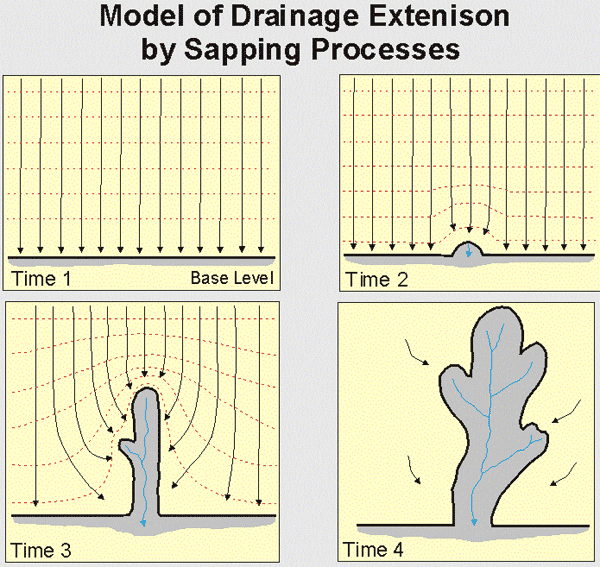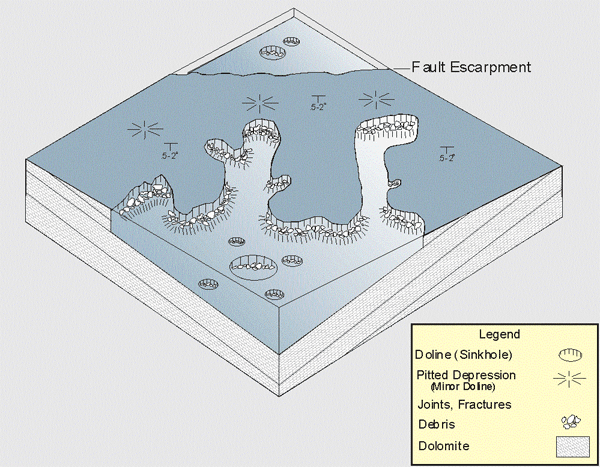
Kansas Geological Survey
Open-file Report 2001-55

|
|
Kansas Geological Survey Open-file Report 2001-55 |
 |
| Ground-water flows through the strata towards baselevel (Time 1) and encounters an irregularity (Time 2,outcropping joint or erosional notch). Ground-water emerges at this irregularity. The increased flow enhances local weathering and initiates the sapping process, causing headward migration of the valley (Time 3). Tributaries grow as ground-water exploits zones of susceptibility (usually joints) along the sidewalls (Time 4, after Dunne, 1980). |
 |
| Conceptual diagram showing the evolution of a ground-water sapped drainage networking relation to structural control (joints, fractures) and primary bed dip. Just as in karst erosion, regional and local structural elements appear to have an important role in ground-water sapping processes. The spatial relations of the regional joint pattern exert considerable control on the orientations of the drainages. Most of the drainages in the area follow a northwest - southeast or northeast-southwest trend, which follows closely with interpreted lineaments on gravity and magnetics maps. The relative constancy of orientation of tributary valleys suggest structural control. These tributaries are likely located at sites where secondary joints collected run-off and were subsequently widened to form channels. Where faulting is recognized there is definite alignment of drainages. As headward migration continues to a mature stage, the drainage basins interact, resulting in lightbulb-shaped areas in up-dip parts of the drainage basin. |
|
|
e-mail : webadmin@kgs.ku.edu
Last updated January 2002
http://www.kgs.ku.edu/PRS/publication/OFR2001-55/P3-02.html